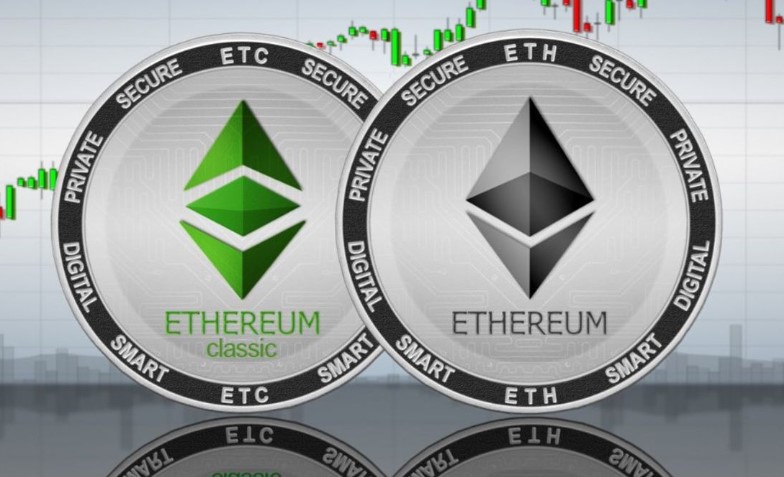
Ethereum Classic: Exploring the Immutable Blockchain

Introduction to Ethereum Classic
In the vast landscape of cryptocurrencies, Ethereum Classic stands as a resilient and unyielding force. Launched in July 2016, Ethereum Classic is an open-source, decentralized blockchain platform that emerged as a result of a contentious hard fork from Ethereum. It shares many similarities with its counterpart but also boasts its own unique features and philosophy.
What is Ethereum Classic?
Ethereum Classic (ETC) is a distributed computing platform that enables developers to build and deploy smart contracts and decentralized applications (dApps). It operates on a blockchain-based system, similar to Ethereum, but with a distinct focus on immutability and decentralization.
History of Ethereum Classic
The roots of Ethereum Classic trace back to the infamous DAO (Decentralized Autonomous Organization) hack in 2016. The DAO was a crowdfunding project built on the Ethereum blockchain, aiming to create a decentralized venture capital fund. However, a vulnerability in its code was exploited, resulting in the loss of millions of dollars worth of Ether.
In response to the hack, the Ethereum community faced a pivotal decision: whether to implement a hard fork to reverse the transactions and recover the stolen funds. This led to a divide within the community, ultimately resulting in the creation of two separate blockchains: Ethereum (ETH) and Ethereum Classic (ETC).
How Ethereum Classic Works
Ethereum Classic operates on a Proof of Work (PoW) consensus algorithm, similar to Bitcoin. Miners compete to solve complex mathematical puzzles to validate transactions and secure the network. Additionally, Ethereum Classic supports smart contracts, self-executing contracts with the terms of the agreement directly written into code.
Key Features of Ethereum Classic
One of the defining features of Ethereum Classic is its commitment to immutability. Transactions on the Ethereum Classic blockchain are irreversible, ensuring that once recorded, they cannot be altered or deleted. This feature appeals to those who value censorship resistance and a truly immutable ledger.
Decentralization is another core principle of Ethereum Classic. The network is maintained by a diverse group of miners and node operators around the world, ensuring that no single entity has control over the platform. This decentralized structure enhances security and resilience against censorship and attacks.
Differences Between Ethereum and Ethereum Classic
While Ethereum and Ethereum Classic share a common ancestry, they have diverged in their development paths and philosophies. Ethereum prioritizes flexibility and innovation, often implementing changes and upgrades to improve scalability and efficiency. In contrast, Ethereum Classic maintains a steadfast commitment to the original principles of decentralization and immutability.
Use Cases of Ethereum Classic
Ethereum Classic’s versatility makes it suitable for a wide range of applications. Decentralized applications (dApps) built on the Ethereum Classic platform can facilitate secure and transparent peer-to-peer transactions, eliminating the need for intermediaries. Additionally, Ethereum Classic has potential use cases in Internet of Things (IoT) devices and supply chain management, where trust and transparency are paramount.
Investing in Ethereum Classic
For investors looking to enter the cryptocurrency market, Ethereum Classic presents an intriguing opportunity. Buying and storing ETC tokens can be done through various online exchanges and digital wallets. However, it’s essential to be aware of the inherent price volatility in the cryptocurrency market and to conduct thorough research before investing.
Challenges and Future Outlook
Despite its strengths, Ethereum Classic faces several challenges on its path to widespread adoption. Scalability remains a significant concern, as the network must contend with increasing transaction volumes and competition from other blockchain platforms. Additionally, Ethereum Classic must navigate a competitive landscape populated by rival projects vying for market share and developer mindshare. However, with a dedicated community and a clear development roadmap, Ethereum Classic is well-positioned to overcome these challenges and thrive in the evolving blockchain ecosystem.
Conclusion
Ethereum Classic embodies the principles of decentralization, immutability, and security, making it a compelling option for developers, investors, and enthusiasts alike. As the blockchain industry continues to mature and evolve, Ethereum Classic stands as a steadfast beacon of resilience and innovation.
FAQs
- Is Ethereum Classic the same as Ethereum? No, Ethereum Classic is a separate blockchain that emerged as a result of a contentious hard fork from Ethereum in 2016.
- How can I buy Ethereum Classic? Ethereum Classic can be purchased on various cryptocurrency exchanges using fiat currency or other cryptocurrencies.
- What are smart contracts? Smart contracts are self-executing contracts with the terms of the agreement directly written into code. They automatically enforce and execute the terms of the agreement when predefined conditions are met.
- What is the significance of immutability in blockchain technology? Immutability ensures that once data is recorded on the blockchain, it cannot be altered or deleted, providing a tamper-proof and transparent record of transactions.
-
What are some potential use cases for Ethereum Classic? Ethereum Classic can be used for decentralized applications (dApps), Internet of Things (IoT) devices, supply chain management, and more.